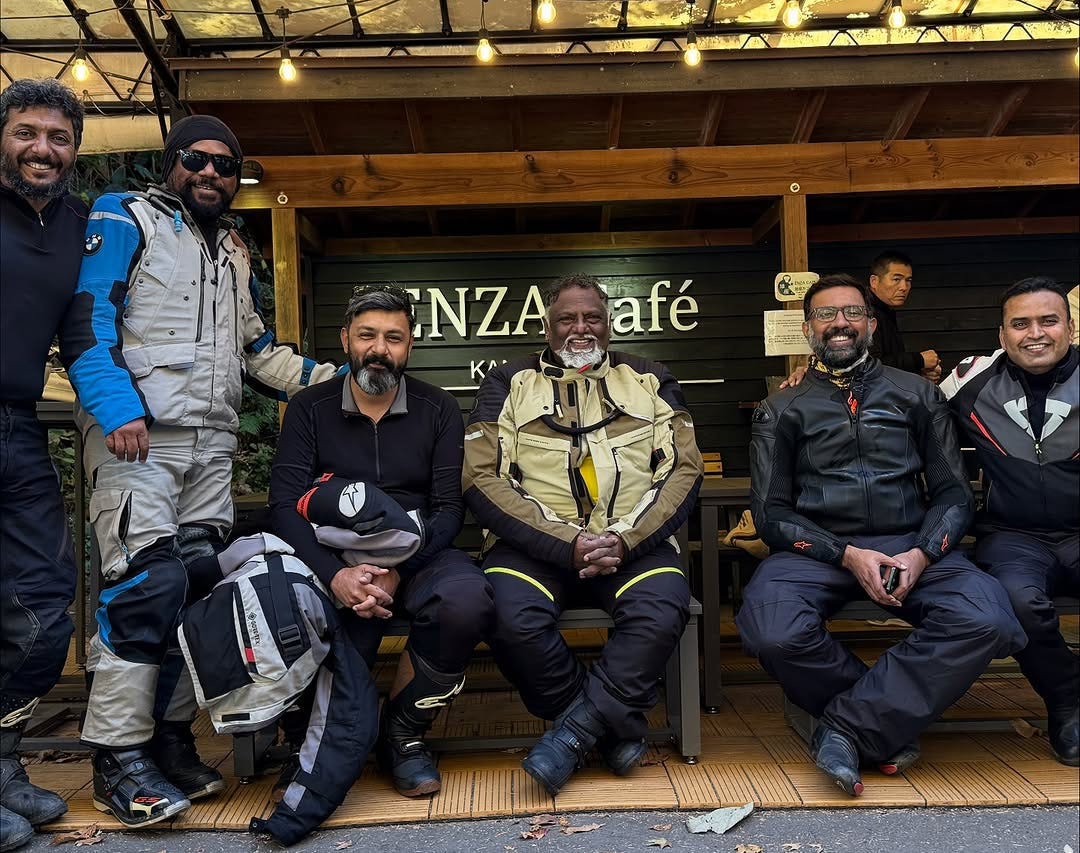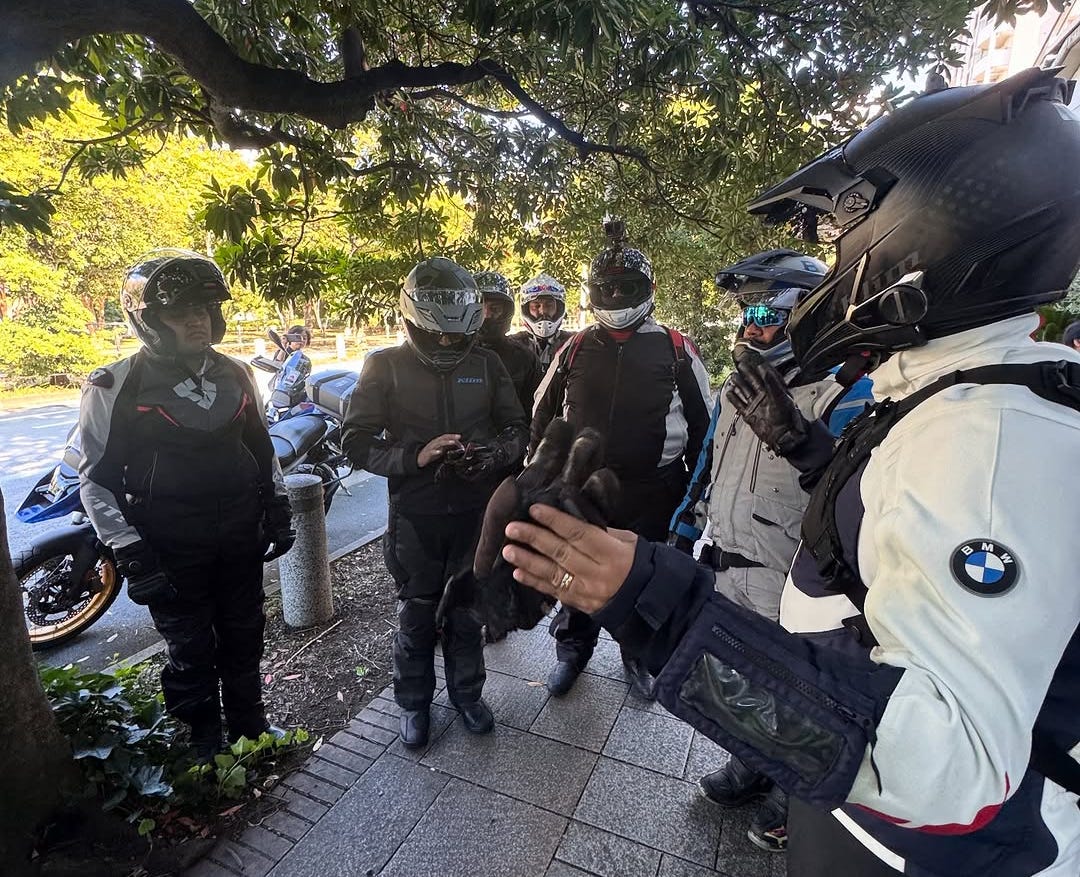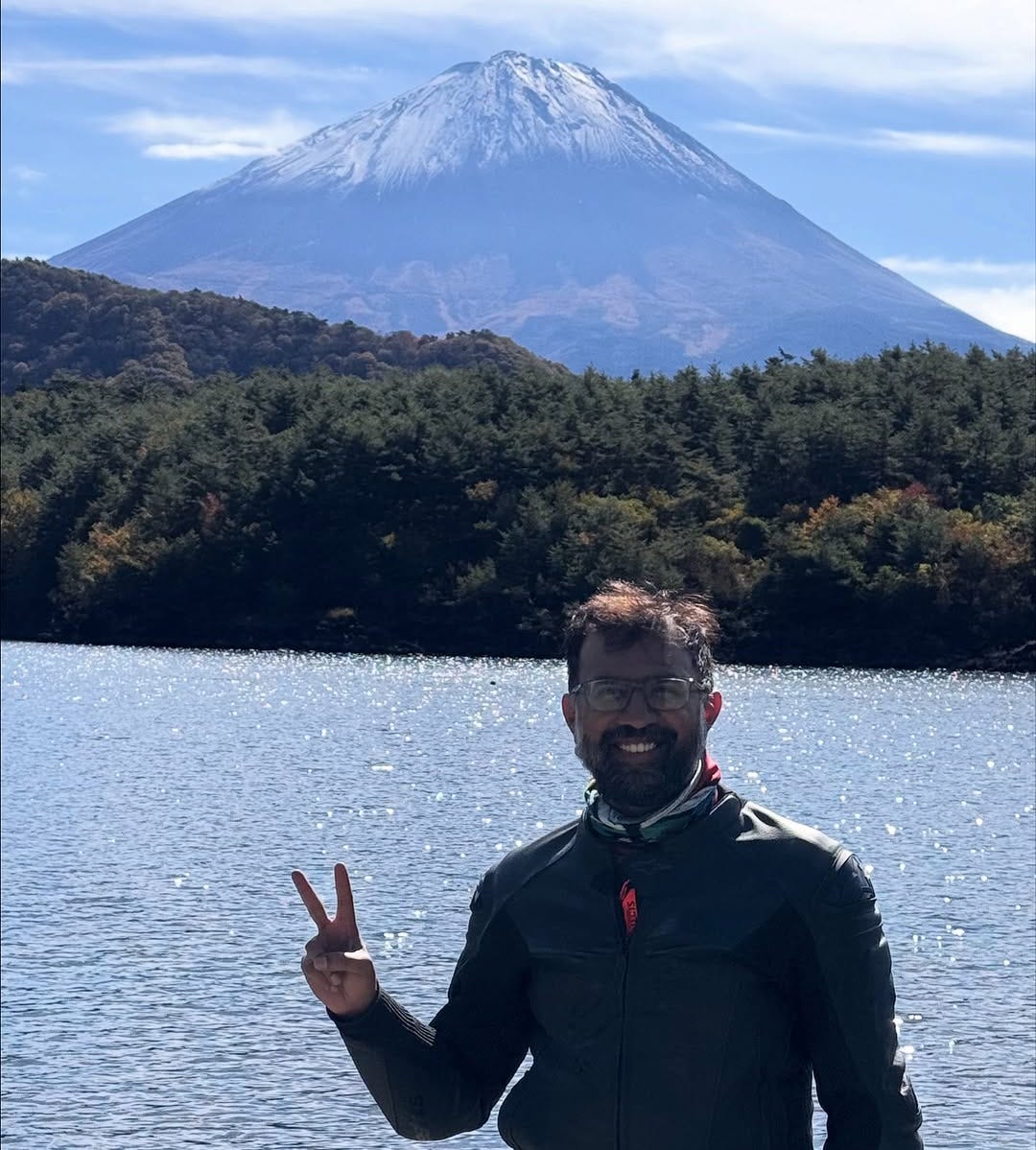Riding Through Japan: How a 1,200 km Motorcycle Trip Changed My Life
How a motorcycle ride through Japan gave me clarity, courage, and perspective.
For as long as I can remember, I’ve wanted to ride a motorcycle on international soil.
Not to prove a point, not to check a box, but to answer a simple question that every Indian rider wonders at some point:
“Are foreign roads really that much better… or is it all overrated?”
I also wanted to see what a completely different culture, landscape, and environment would feel like when experienced from the saddle of a motorcycle. Most people choose Europe for their dream rides. Japan, on the other hand, is rarely explored on two wheels - mainly because navigating its motorcycle rental, licensing, and traffic rules is not straightforward.
But one day, completely unexpectedly, I saw a Japan ride being organized by JSP BMW Motorrad Bangalore in partnership with Venus Motorcycles, a company founded by actor Ajith Kumar - a man known for his passion for cars, bikes, and pure motorhead lifestyle.
It was rare. It felt special. And something inside me whispered the same words that changed the course of many adventures:
“If not now… when?”
And that’s how my journey to Japan began.
Preparing for the Trip: Stress, Excitement, and a Lot of Paperwork
The first real challenge was the Japan visa. Unlike many countries, Japan demands a thick file of documentation. You need confirmed flights and hotel bookings before applying - meaning if the visa is rejected, you could potentially lose money.
People reassured me: “Don’t worry. If your documents are correct, you’ll get the visa.”
That helped, but the anxiety was still there.
Next came the International Driving Permit (IDP). My Indian driving license was on the verge of expiry, so I had to renew it first, then apply for the IDP.
Packing was equally intense. Japan Airlines allowed 46 kg of luggage, and I used every bit of it - riding gear is heavy. Helmet, jackets, thermals, rain gear… all essential. I also packed medicines, protein snacks, and even some homemade pickles - just in case Japanese food turned out too bland for my taste.
Spoiler: I ended up loving the food.
On the day of departure, the CO2 canister inside my motorcycle airbag jacket triggered an alert at the Bangalore airport. I spent a few minutes explaining what it was, and eventually got clearance. It was a small hassle, but nothing could dull my excitement.
As soon as I stepped onto the Japan Airlines flight, I felt it - the signature Japanese touch: polite, precise, warm. Even the airline food tasted amazing.
Seven hours later, I landed in Tokyo… in the rain.
Heavy rain.
A part of me panicked:
“What if it rains all week? What if I never get to see Japan’s dry autumn?”
But the rain stopped the next morning, and except for a drizzle on the last day, the weather throughout the ride was perfect.
Day 1: Tokyo → Mount Fuji (200 km)
November 2nd was D-Day.
Our group assembled in the hotel lobby for a briefing. The Japanese take traffic rules very seriously - lane discipline, signals, signs - everything is clear and strict.
We took a cab to the rental location, and that’s when I faced my first regret of the trip.
I had booked the BMW R nineT, wanting to try something different. But once I sat on it, reality hit:
It felt too small for my height.
It had no windshield.
The cold wind felt brutal.
Still, I stuck with it.
The first 200 km were exhilarating but uncomfortable. Riding in a new country on unfamiliar roads while learning new rules is emotionally overwhelming. But every moment felt worth it when we reached our hotel and looked outside:
Mount Fuji stood tall and clear - the rarest sight.
Most people never see Fuji without clouds covering it. We got lucky on Day 1.
That night, I struggled to process everything. It felt like I was living inside a dream I had imagined years ago.
Day 2: Fuji → Takayama (270 km)
The next morning, the real relief came - I got to switch to the BMW GS 1300, thanks to our captain arranging it with the rental company.
Suddenly, the ride transformed completely.
The GS 1300 felt like home.
Comfortable. Powerful. Stable.
We rode around Mount Fuji under a perfectly clear sky, saw autumn colors everywhere - red, orange, yellow - and stopped at a lake facing Fuji for photos.
That day, we covered around 270 km and ended in the charming town of Takayama.
Day 3: Takayama → Kanazawa
The ride to Kanazawa was smooth and scenic. The group had now developed rhythm - we matched pace, took turns easily, and followed signals like a well-coordinated unit.
Kanazawa welcomed us with incredible seafood and a warm evening of bonding. I chose a single room because Japanese hotel rooms are tiny - almost no walking space - and the touring company kindly accommodated my request.
The next day was a rest day, and I slept until the afternoon. Half the ride was behind us, and the realization began settling in:
This trip wasn’t just an adventure.
It was becoming something emotional.
Day 4: Kanazawa → Nagano
Nagano is colder, higher, quieter.
The ride into Nagano was peaceful, meditative, and scenic. By this day, I began missing home food… but Japan’s beauty kept me distracted.
Riding through the forests and mountain roads of Japan, with clean air brushing against my helmet, felt therapeutic.
Our riding group had now reached complete sync - we moved almost like a single formation. And as the temperature dropped, the GS 1300 kept me warm and confident.
Day 5: Nagano → Karuizawa (Snow Day)
This was one of the most magical days of the entire trip.
We attempted to ride up Japan’s highest motorable road. As we climbed, we began seeing snow on both sides of the road - soft, white, untouched.
Unfortunately, the summit was closed due to dangerous conditions. If we had come a month earlier, we could have made it to the top.
But even that glimpse of snow felt unforgettable.
It was a moment of gratitude, awe, and stillness.
Day 6: Back to Tokyo
On the final riding day, it rained. Instead of the scenic route, we took the expressway and cruised at high speeds all the way back to Tokyo.
That evening, we visited Shibuya, saw the famous Hachiko statue, and walked through the bustling crossing. The energy of Tokyo after a week of mountains and forests felt surreal.
Inside, I felt bittersweet.
Six days. Over 1,200 kilometers.
And the trip was coming to an end.
Reflections: What the Ride Taught Me
This wasn’t just a motorcycle trip.
It was a mirror.
Inside my helmet, with hours of silence each day, I had time to think deeply about:
my business
my relationships
my mistakes
my priorities
my next steps in life
I also reflected on the kind of people I was riding with — not just successful, but fearless. Motorcycle riders are a different breed. They accept risk, manage it intelligently, and extract maximum joy from life.
By the end of the trip, I realized something life-changing:
Every future international trip I take will be a motorcycle trip.
Nothing else makes me feel this present, this alive.
Final Day in Tokyo
Before heading home, I visited the Shoei flagship store - got my helmet custom-fitted, changed the padding, and bought a new helmet.
I also visited the Imperial Palace, surrounded by modern skyscrapers yet beautifully preserved like an ancient world of its own.
A final metro ride, a final walk through Tokyo’s clean streets… and then it was time to return to Narita Airport.
What Japan Means to Me Now
Japan surprised me in every possible way.
The food - even though simple - was incredibly healthy and gut-friendly.
The people were polite, warm, helpful, and genuinely kind.
The roads were clean, organized, and beautifully maintained.
The country felt disciplined, respectful, and culturally rich.
If you’re a rider reading this, listen closely:
Ride through Japan once in your life.
It will change you in ways you can’t predict.
It changed me - emotionally, mentally, and spiritually.
This wasn’t a trip.
It was transformation.
And it’s an experience I’ll carry with me for the rest of my life.








Inspiring story, especially for me, who was driving a motorcycle for more than 36 years, travelling long distances in the Southern part of India. Motorcycle driving is a different dimension and the experience is phenomenal.